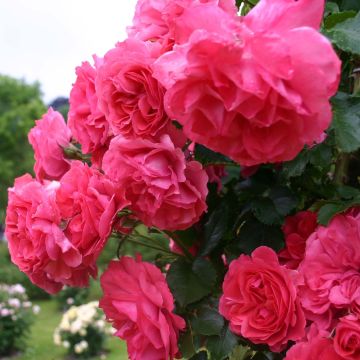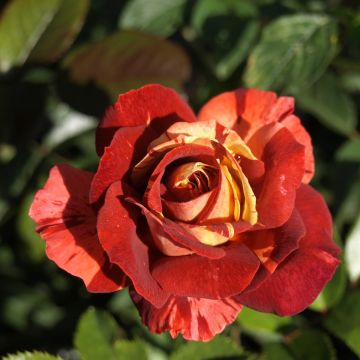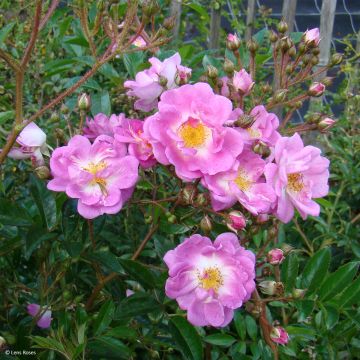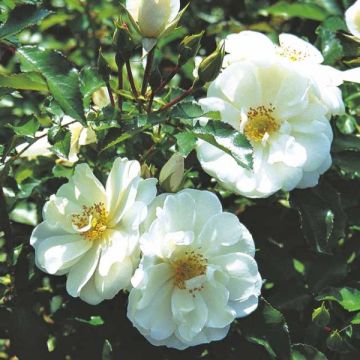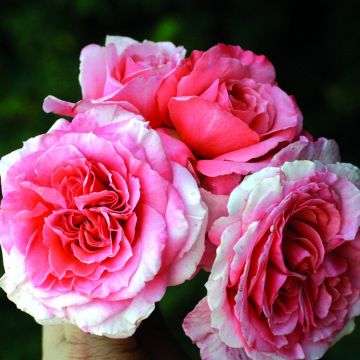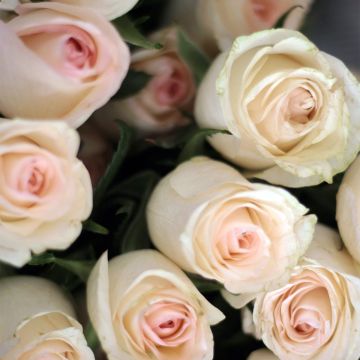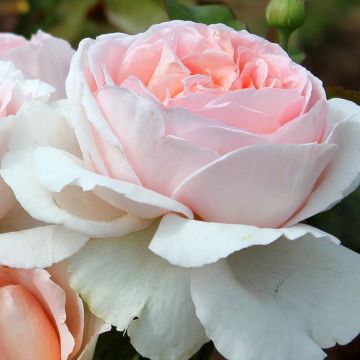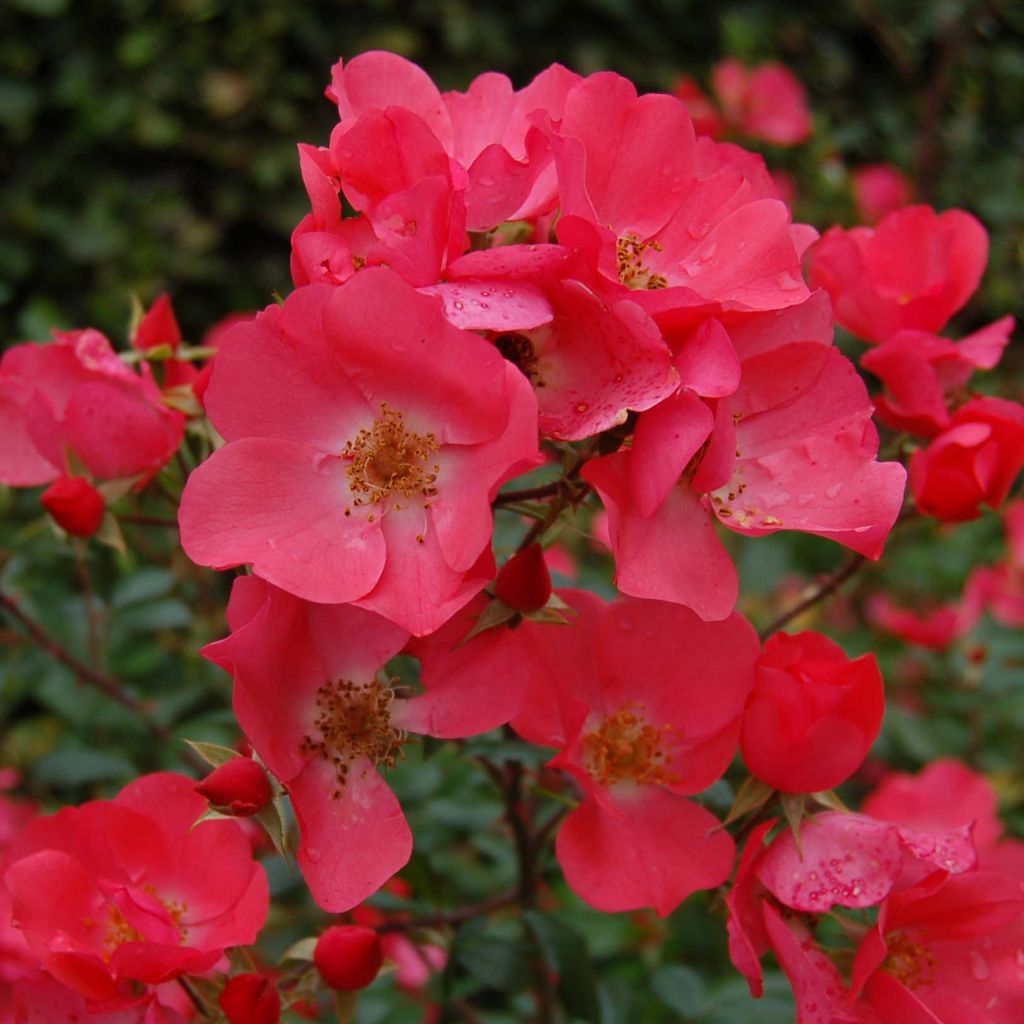

Rosa Douceur Normande
Rosa Douceur Normande
Rosa Douceur Normande® 'Meipopul'
Rose [Douceur Normande]
This item cannot be shipped to the selected country
Delivery charge from €5.90
Delivery charge from €5.90
Delivery charge from €5.90
Delivery to Corse prohibited
More information
Schedule delivery date,
and select date in basket
This plant carries a 24 months recovery warranty
More information
We guarantee the quality of our plants for a full growing cycle, and will replace at our expense any plant that fails to recover under normal climatic and planting conditions.
From €5.90 for pickup delivery and €6.90 for home delivery
Express home delivery from €8.90.
From €5.90 for pickup delivery and €6.90 for home delivery
Express home delivery from €8.90.
From €5.90 for pickup delivery and €6.90 for home delivery
Express home delivery from €8.90.
Delivery to Corse prohibited: UE law prohibits the import of this plant from mainland France to Corse as part of the fight against Xylella fastidiosa. Please accept our sincere apologies.
More information
Does this plant fit my garden?
Set up your Plantfit profile →
Description
Rosa Douceur Normande is a remarkable half-shrub half-landscape rose. This repeat-flowering bush tolerates shade and is resistant to diseases, cold, and drought. Its flowering, in the form of large single roses with a vibrant salmon colour, is particularly abundant and regular from late spring to the first frost. With an upright, yet bushy and flexible habit, it will work wonders in a small hedge, a large shrub border, or even simply in a large pot on a patio.
Rosa Douceur Normande was derived from the Asian climbing rose R. wichuraiana. While modern roses are often criticised for their stiffness and weak disease resistance, Douceur Normande has the purple, flexible, and thorny branches of its vigorous ancestor. Its glossy foliage is disease-resistant.
It is also known as 'Coral Meidiland', 'Goose Fair', 'Sandton City' or 'Stadt Hildesheim'.
Obtained in 1993 by Alain Meilland, this somewhat unclassifiable rose is still classified as a cluster-flowered rose. It forms a superb slightly spreading bush, often wider than tall, with flexible branches. Its average size reaches 1.2m (4ft) in height and 1.3m (4ft) in width. In warm regions, it can easily reach 2m (7ft) in height and 4m (13ft) in width. From May until the first frost, it bears clusters of 4 to 5 single roses with undulated margins, 6cm (2in) wide. Their colour is somewhere between bright pink and orange. The lighter centre of the flower with a small white eye is filled with numerous golden yellow stamens. The fragrance is discreet, if not absent. Small orange hips form after flowering if faded flowers are not removed. Its dark green foliage displays red veins. This variety offers excellent resistance to rust and black spot disease. It only requires annual pruning in late winter. It received the award for landscape rose at Bagatelle in 1993.
With its vivacity, simplicity, and vigour, Rosa Douceur Normande will undoubtedly find its place in any garden. Robust and reliable, it adapts to all soils that are not too dry and all climates (even hot ones). It will integrate perfectly into a large shrub border or a landscaped hedge, in the company of Japanese quinces, berberis, Mexican orange blossoms, or other landscape or botanical roses like Emera, Opalia, Swany, and Rosa officinalis. Left unrestricted, it will form a beautiful flowering dome with blurred shapes, creating an incredibly elegant display in front of a border of flowering shrubs composed of abelias, kolkwitzia, mock oranges, elderberries, brooms, laburnums, and lilacs. In Mediterranean climates, it could form a large ground cover in shaded areas.
Report an error about the product description
Rosa Douceur Normande in pictures
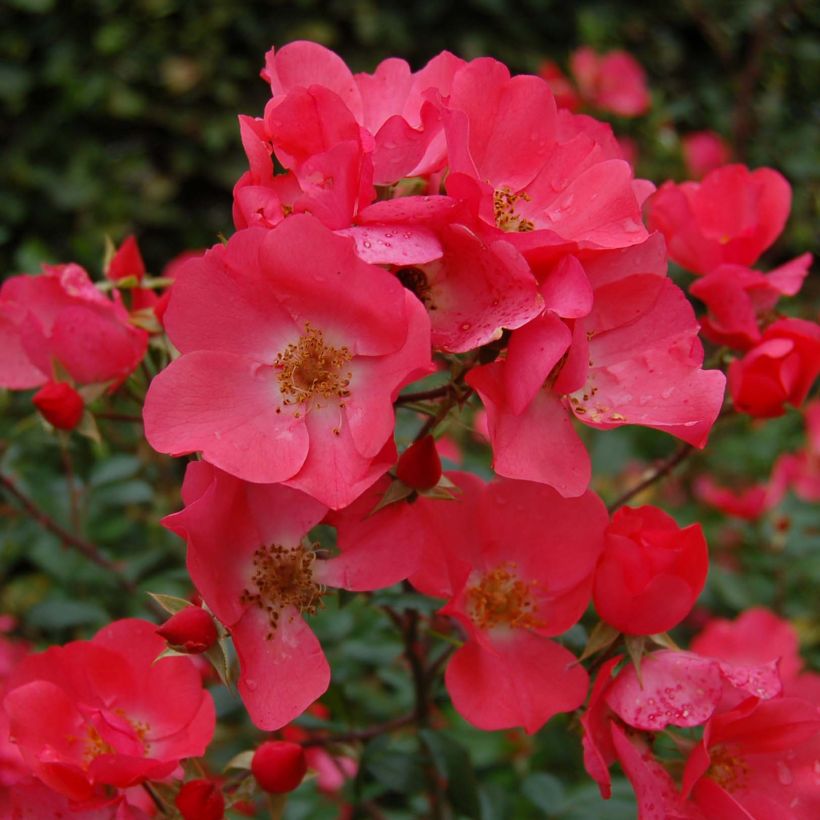

Plant habit
Flowering
Foliage
Botanical data
Rosa
Douceur Normande® 'Meipopul'
Rosaceae
Rose [Douceur Normande]
Cultivar or hybrid
Rosa canina Laxa (4L/5L pot, Wrapped bare root)
Other Roses A to Z
Planting and care
Rosa Douceur Normande is a low-maintenance plant when it comes to soil and exposure. Work the soil to a depth of 25cm (10in), crumble the soil well, and place a base amendment such as dried blood or dehydrated horn at the bottom of the planting hole. Position your plant, removed from its pot, and cover the top of the root ball with 3cm (1in) of soil. Fill in the hole and water generously to eliminate air pockets. In dry weather, water regularly for a few weeks to facilitate root development. Water regularly in hot and dry weather during its first two years. Once established, your rose will not require watering in summer. Provide your rose with special rose fertiliser that stimulates flowering in plants.
Roses are often stained or unsightly at the end of summer, but this will not hinder their development. These spots are a natural phenomenon and will not harm the rose.
Planting period
Intended location
Care
-
, onOrder confirmed
Reply from on Promesse de fleurs
Haven't found what you were looking for?
Hardiness is the lowest winter temperature a plant can endure without suffering serious damage or even dying. However, hardiness is affected by location (a sheltered area, such as a patio), protection (winter cover) and soil type (hardiness is improved by well-drained soil).

Photo Sharing Terms & Conditions
In order to encourage gardeners to interact and share their experiences, Promesse de fleurs offers various media enabling content to be uploaded onto its Site - in particular via the ‘Photo sharing’ module.
The User agrees to refrain from:
- Posting any content that is illegal, prejudicial, insulting, racist, inciteful to hatred, revisionist, contrary to public decency, that infringes on privacy or on the privacy rights of third parties, in particular the publicity rights of persons and goods, intellectual property rights, or the right to privacy.
- Submitting content on behalf of a third party;
- Impersonate the identity of a third party and/or publish any personal information about a third party;
In general, the User undertakes to refrain from any unethical behaviour.
All Content (in particular text, comments, files, images, photos, videos, creative works, etc.), which may be subject to property or intellectual property rights, image or other private rights, shall remain the property of the User, subject to the limited rights granted by the terms of the licence granted by Promesse de fleurs as stated below. Users are at liberty to publish or not to publish such Content on the Site, notably via the ‘Photo Sharing’ facility, and accept that this Content shall be made public and freely accessible, notably on the Internet.
Users further acknowledge, undertake to have ,and guarantee that they hold all necessary rights and permissions to publish such material on the Site, in particular with regard to the legislation in force pertaining to any privacy, property, intellectual property, image, or contractual rights, or rights of any other nature. By publishing such Content on the Site, Users acknowledge accepting full liability as publishers of the Content within the meaning of the law, and grant Promesse de fleurs, free of charge, an inclusive, worldwide licence for the said Content for the entire duration of its publication, including all reproduction, representation, up/downloading, displaying, performing, transmission, and storage rights.
Users also grant permission for their name to be linked to the Content and accept that this link may not always be made available.
By engaging in posting material, Users consent to their Content becoming automatically accessible on the Internet, in particular on other sites and/or blogs and/or web pages of the Promesse de fleurs site, including in particular social pages and the Promesse de fleurs catalogue.
Users may secure the removal of entrusted content free of charge by issuing a simple request via our contact form.
The flowering period indicated on our website applies to countries and regions located in USDA zone 8 (France, the United Kingdom, Ireland, the Netherlands, etc.)
It will vary according to where you live:
- In zones 9 to 10 (Italy, Spain, Greece, etc.), flowering will occur about 2 to 4 weeks earlier.
- In zones 6 to 7 (Germany, Poland, Slovenia, and lower mountainous regions), flowering will be delayed by 2 to 3 weeks.
- In zone 5 (Central Europe, Scandinavia), blooming will be delayed by 3 to 5 weeks.
In temperate climates, pruning of spring-flowering shrubs (forsythia, spireas, etc.) should be done just after flowering.
Pruning of summer-flowering shrubs (Indian Lilac, Perovskia, etc.) can be done in winter or spring.
In cold regions as well as with frost-sensitive plants, avoid pruning too early when severe frosts may still occur.
The planting period indicated on our website applies to countries and regions located in USDA zone 8 (France, United Kingdom, Ireland, Netherlands).
It will vary according to where you live:
- In Mediterranean zones (Marseille, Madrid, Milan, etc.), autumn and winter are the best planting periods.
- In continental zones (Strasbourg, Munich, Vienna, etc.), delay planting by 2 to 3 weeks in spring and bring it forward by 2 to 4 weeks in autumn.
- In mountainous regions (the Alps, Pyrenees, Carpathians, etc.), it is best to plant in late spring (May-June) or late summer (August-September).
The harvesting period indicated on our website applies to countries and regions in USDA zone 8 (France, England, Ireland, the Netherlands).
In colder areas (Scandinavia, Poland, Austria...) fruit and vegetable harvests are likely to be delayed by 3-4 weeks.
In warmer areas (Italy, Spain, Greece, etc.), harvesting will probably take place earlier, depending on weather conditions.
The sowing periods indicated on our website apply to countries and regions within USDA Zone 8 (France, UK, Ireland, Netherlands).
In colder areas (Scandinavia, Poland, Austria...), delay any outdoor sowing by 3-4 weeks, or sow under glass.
In warmer climes (Italy, Spain, Greece, etc.), bring outdoor sowing forward by a few weeks.




































